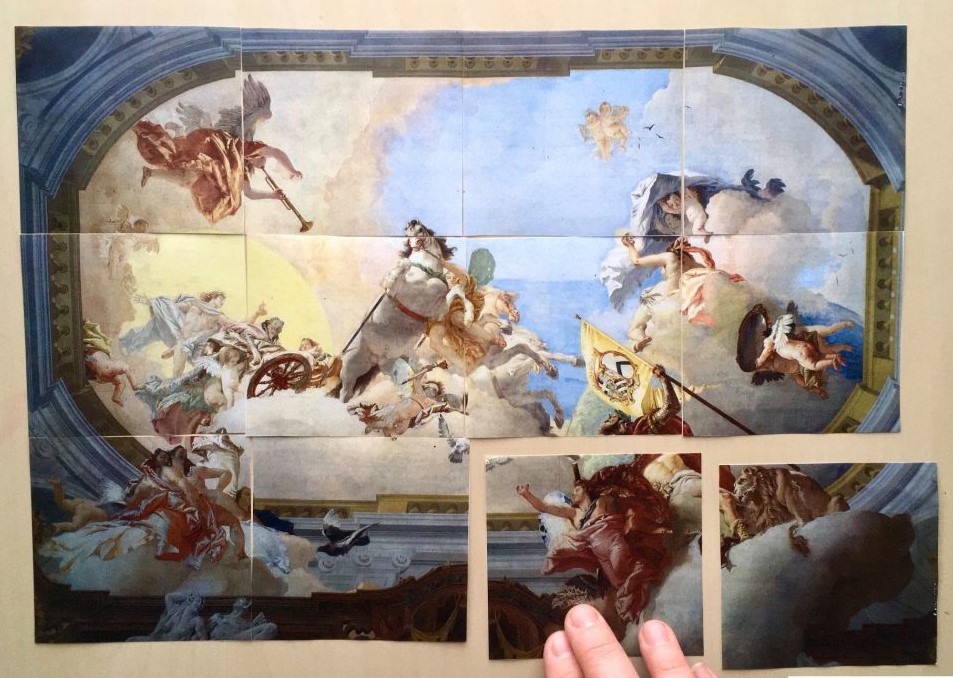SACHE
Musei civici Venezia
Digital manufacturing – Civic Museums of Venice & Fablab
The objective of this project is to enhance the value of the Civic Museums of Venice by using the new technologies and the digitalization of contents, to make collections more accessible and enjoyable, and develop learning paths, taking into account the real context in which museums are situated. Actors involved have been the Director of Area 2 of the Civic Museums of Venice, the Head of Human Resources of the Civic Museums of Venice, the Head of the Museum of Natural History, and Responsible for Educational Activities of the Civic Museums of Venice, a founding partner of Fablab and the project coordinator of Fablab (Vicino, 2021).
The Foundation Civic Museums of Venice (MUVE) is an instution comprising 12 museums: Palazzo Ducale, Museo Correr, Torre dell’Orologio, Ca’ Rezzonico Museo del Settecento Veneziano, Palazzo Mocenigo – Centro Studi di Storia del Tessuto e del Costume, Casa di Carlo Goldoni, Ca’ Pesaro – Galleria Internazionale d’Arte Moderna, Palazzo Fortuny, Murano Glass Museum, Burano Lace Museum and Natural History Museum. It it a private subject managing a public heritage having a single founding member represented by the Municipality of Venice. In addition to traditional activities the network of the autonomus museums undertakes a set of different cultural services: formation, teaching, temporal events, fostering a dialogue with the territory and its public. (https://visitmuve.testmeup.com/it/fondazione/presentazione/).
During the projectuality of SACHE, the Foundation has expressed the necessity to connect their cultural production to the territory, made of industries, private entities, citizens, etc., acting as a link between them and promoting social inclusion. It would like to be an engine of change and innovation for the city, acting both at a business production and social level, attracting also private sponsorship to convey their mission.
Fablab Venezia Srl is inspired by the extension of the Center of Bits and Atoms, Fab Lab, of the University of Boston, and was born with the intention to develop its values of digital manufacturing and computational processes also in the Veneto region (https://www.fablabvenezia.org/chi-siamo/). It deals with the development of creative, business and innovation projects, doing also educational activities, working to be a reference point for innovative practices, and the elaboration of new projects through digital manufacturing. They possess significant technological equipment and knowledge, and as a fablab it is conceived as an interactive reality that collaborates with other actors to share projects and knowledge among which we can count professionals, craftsmen, business companies, Agencies, and Public Administrations, students, and schools (ibid.).
The project was designed on the Foundation MUVE’s necessity to develop innovative and inclusive museum paths and integrated solutions. In this vision, Fablab merged to realize solid three-dimensional physical models useful for the distribution of goods also to the categories of carriers of disabilities normally excluded from the traditional paths. This resulted in a project thought to reshape a high-value museum space and to bring it closer to people with visual disabilities, stimulating its tactile sphere by employing 3D reproductions of the works of art made by Fablab that people can touch and experience through senses different from sight. This choice is accompanied by the formulation of training workshops for museum operators to know these technologies and be able to communicate them to the public. This project is built on the value of inclusion, with a particular focus on inclusive communication for people with disabilities and children: new technologies are the means through which a new audience can benefit from the museum heritage (Vicino, 2021). From this formulation, taking into consideration the necessity to bring the cultural production closer to the territory thanks to new forms of contamination by conceiving museums as engines of innovation able to foster new forms of collaborations that affect the local productive and social fabric and the need to diversify the audience, was born an active partnership. Fablab and the Civic Museums of Venice initiated a multi-year collaboration, starting with:
The digitalization of the Capitello dei Mestieri and reproduction at Palazzo Ducale: they realized a functional 3d model that increased the enjoyment for the public and made possible the activation of learning paths for children and people with special needs such as the blind and the visually impaired, with the objective to enhance the connection between people and heritage.
The reconstruction of a model of Palazzo Ducale aimed at tactile fruition, making the bumps and complexity enjoyable also by blind and visually impaired people.
The proposal of digital solutions for the reconstruction of relief panels able to return to a large audience the engravings of Jacopo De Barberi kept at the Museo Correr in Venice (Colleselli, 2022).
Through this partnership, technology is used as a means of social inclusion, permitting a new form of representation and presentation of heritage and traditional architectural barriers are broken down in order to prefer a more innovative solution based on the exchange of knowledge and expertise. We can consider this collaboration very fruitful from different perspectives and a good example of how museums and businesses can merge in a strategic partnership, that bring advantages in the long term and to society at large.
TITOLO:
SACHE - Musei civici Venezia
ANNO:
2021
AREA:


